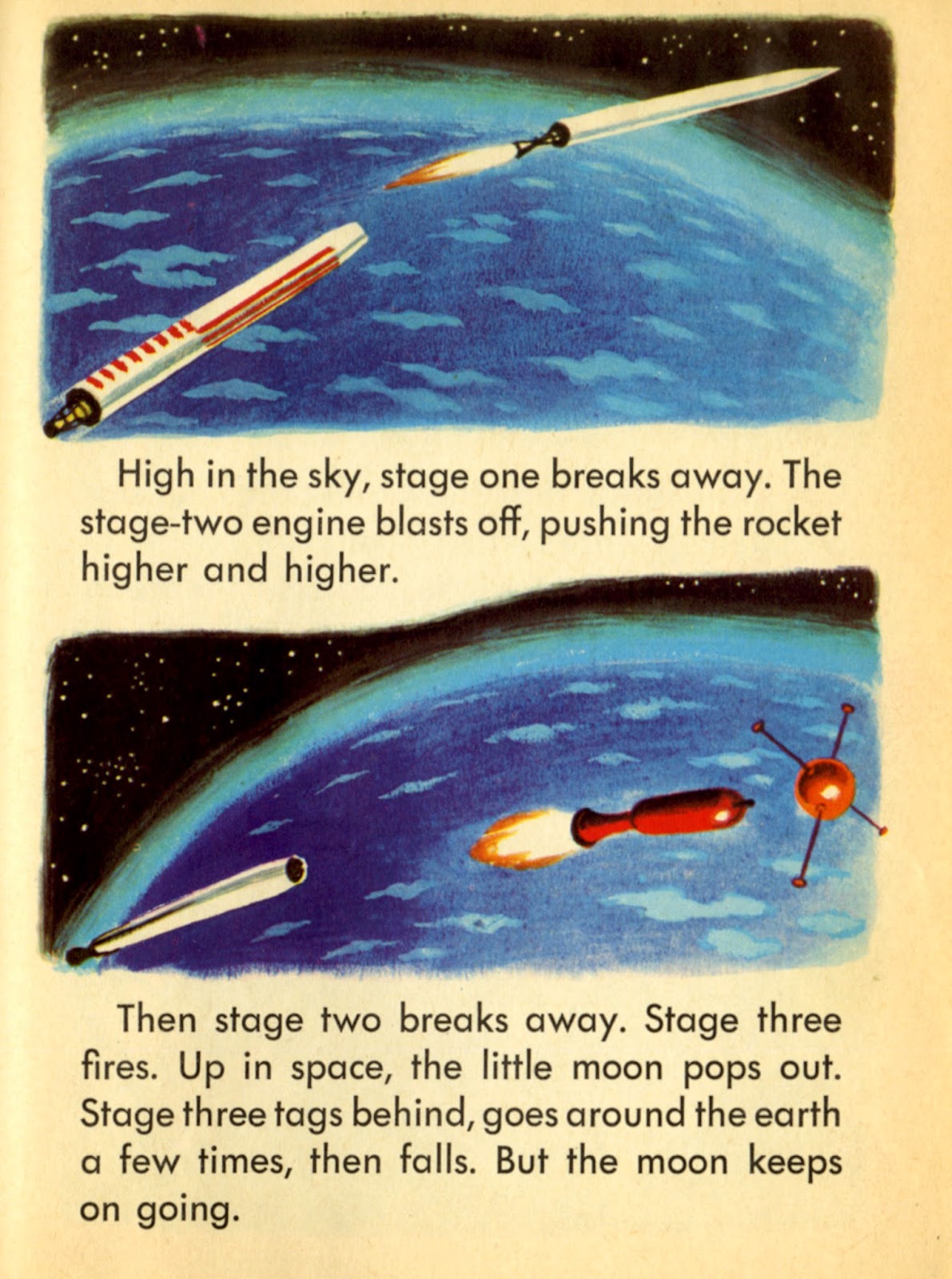For the last post about this book I wanted to share the above illustration about "space war". This is one of the few I have found that pictured the military rational for going to the Moon. The U.S. was deep in the Cold War and the thought that whoever got to the Moon fist might dominate the Earth was consistently put forward as a reason to undertake the huge expense.
Friday, May 29, 2015
The Mystery of Other Worlds Revealed (1952) part 3
For the last post about this book I wanted to share the above illustration about "space war". This is one of the few I have found that pictured the military rational for going to the Moon. The U.S. was deep in the Cold War and the thought that whoever got to the Moon fist might dominate the Earth was consistently put forward as a reason to undertake the huge expense.
Tuesday, May 26, 2015
The Mystery of Other Worlds Revealed (1952) part 2
Friday, May 22, 2015
The Mystery of Other Worlds Revealed (1952) part 1
The Mystery of Other Worlds Revealed. Eisinger, Larry (editor)
New York: Fawcett Publications, 1952. 144 p. 24 cm. Fawcett Book no. 166. Also 1953 hardcover.
Back when space flight was new and exciting there were "special issue" books that people might buy at the news-stand to learn about something current. This was not published for children but I am sure with its variety of subjects and great pictures that many children read it after "their" adult had long tired of it. I want to share just a few of the many neat illustrations in this "book"
A large paperback, featuring articles on Space Travel, Flying Saucers and Rocket Development, and heavily illustrated throughout, This will be an additional post but I will start with the designs of the British Interplanetary Society.
The British Interplanetary Society (BIS), founded in Liverpool in 1933 by Philip E. Cleator, is the oldest space advocacy organisation in the world. Its aim is exclusively to support and promote astronautics and space exploration. In the 1950s they shared some wonderful designs for their visions of the future of space travel.
Friday, May 15, 2015
Over The Edge of the 20th Century (1962)
A Russian book about life in the future and technology. Probably not for children but I enjoy these futuristic images so much.
Over the edge of the 20th century. Leningrad. 17.6 x 22.1 cm (6.9" x 8.7") 222 pages. 1962
Many of these illustrations seem familiar but I appreciate the "archetypal" nature of the soviet visions of the future. Shapes of rockets, use of helicopters, streamlined cars, etc.
I also like the buildings and other future technology. As near as I can tell the one below compares how computers used to take up buildings and now take up only a single room.
LOOK AT THAT CORN!!!
To finish out here are some nice space illustrations about the Soviet current successful missions and future plans for space.
Friday, May 8, 2015
Exploring Space : A True Story of the Rockets of Today and a Glimpse of the Rockets That Are to Come (1958) part 2
A continuation of the paintings from this great space book. See here for part 1
http://dreamsofspace.blogspot.com/2015/05/exploring-space-true-story-of-rockets.html
Wyler, Rose. Illustrated by Gergely, Tibor and Solenewitsch, George. Exploring Space : A True Story of the Rockets of Today and a Glimpse of the Rockets That Are to Come. New York: Simon and Schuster. (24 p.) 21 cm.
Subscribe to:
Posts (Atom)
























































